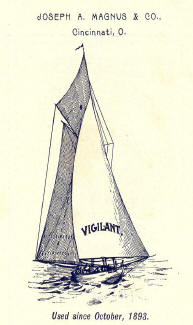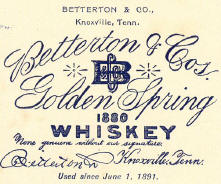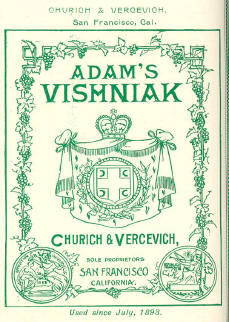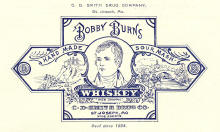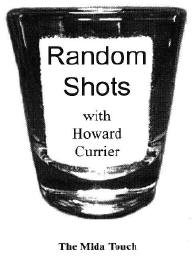
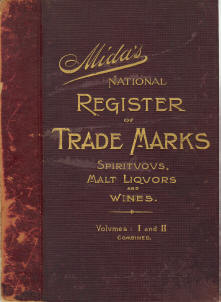
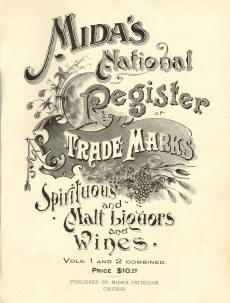
William Mida was a prolific writer and editor of a semi-monthly journal for
the whiskey trade called The Mida Criterion published out of Chicago back in
the late 1800's. A whiskey rectifier himself, (Mida's "Relish",
"Confidential" and "Private and Confidential"), he saw a need for some sort
of record of trademarks as a legal protection against infringement. Thus was
born the sonorously titled Mida's National Register of Trade Marks -
Spirituous and Malt Liquors and Wines. No copyright date is given in the
book and research shows that even the Library of Congress doesn't possess a
copy. However, based on the usage dates given for brands in the register,
volume 1 was issued in 1894 and a combined edition of volumes 1 and 2 in
1899.
A bit of background about trademark protection here might be helpful. The
first federal trademark law was passed in 1870 but met with a luke-warm
reception and was struck down by the courts in 1879 on the basis that it
meddled with intrastate commerce, a fiercely guarded state's right. Gerald
Carson, in his "The Social History of Bourbon" indicates that back in 1870,
the same year that Old Forester made its debut, only 121 trademarks of any
kind were registered.
It wasn't until April 1, 1905 that a generally accepted trademark law was passed and quickly gained acceptance among distillers and brewers. Based on the principle of prior ownership and use, and supervised by the U. S. Patent Office, it became the clearing house for trademark protection. In a recent edition of Paper Pile Quarterly, (Vol. 22, No. 3; November, 2001), Ada Fitzsimmons reproduced a solicitation letter from the Washington D.C. law firm of Mason, Fenwick & Lawrence dated June 9,1906 that included a list of over 850 brands that had already been registered in the brief year since the law's passage, with hundreds of applications still pending processing. Mida's register deals with that gray area from the failure of the first law up until the turn of the century. The 1899 combined edition runs about 300 pages and sold for $10, but Mida presumably recouped much of his expense by selling half and full page ads to Freiberg & Workum, Star Distillery, Early Times, etc.
